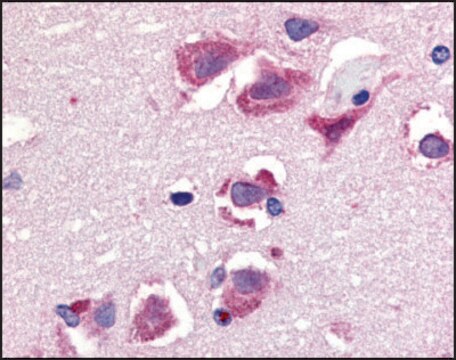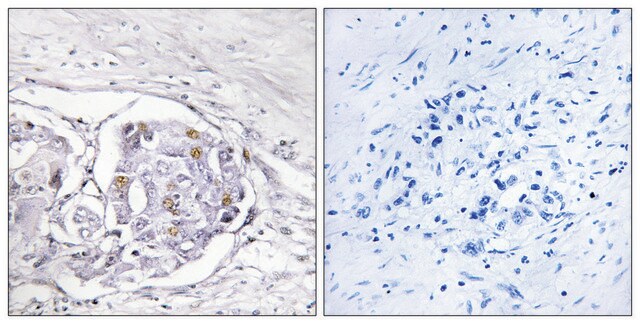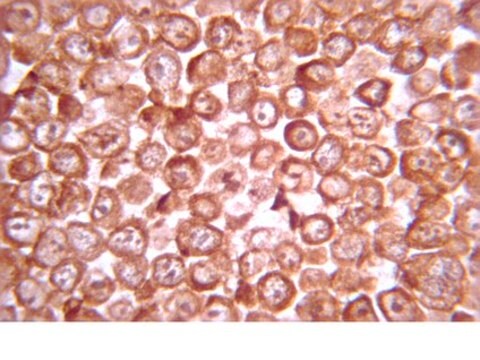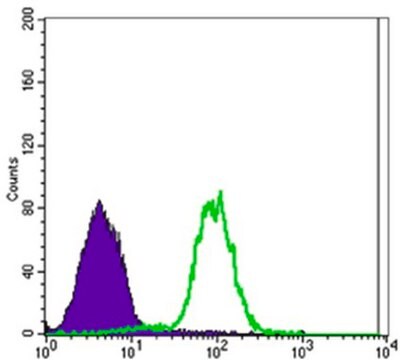MABS1234
Anti-Progesterone Receptor B Antibody, clone 250/H11
clone 250/H11, from mouse
Synonym(s):
Progesterone receptor, PR, Nuclear receptor subfamily 3 group C member 3, Progesterone Receptor B
About This Item
Recommended Products
biological source
mouse
Quality Level
antibody form
purified immunoglobulin
antibody product type
primary antibodies
clone
250/H11, monoclonal
species reactivity
human
technique(s)
immunocytochemistry: suitable
western blot: suitable
isotype
IgG1κ
NCBI accession no.
UniProt accession no.
shipped in
wet ice
target post-translational modification
unmodified
Gene Information
human ... PGR(5241)
General description
Specificity
Immunogen
Application
Immunocytochemistry Analysis: A representative lot stained paraformaldehyde-fixed and Triton X-100-fixed MCF10A cells engineered to express progesterone receptor isoform B (PR-B), but not MCF10A cells engineered to express isoform A/PR-A by fluorescent immunocytochemistry (Courtesy of Dr. Dean Edwards, Baylor College of Medicine, USA).
Western Blotting Analysis: A representative lot detected endogenous progesterone receptor isoform B (PR-B) in human breast cancer T47D cell lysate, as well as exogenously expressed PR-B in transfected DCIS.COM human ductal carcinoma in situ (DCIS) breast cancer cells, but not in PR-A-transfected or untransfected DCIS.COM cells (Courtesy of Dr. Dean Edwards, Baylor College of Medicine, USA).
Signaling
Developmental Signaling
Quality
Western Blotting Analysis: 2.0 µg/mL of this antibody detected progesterone receptor isoforms B (PR-B), but not isoform A (PR-A) in human breast cancer T47D cell lysate.
Target description
Physical form
Storage and Stability
Other Notes
Disclaimer
Not finding the right product?
Try our Product Selector Tool.
Storage Class
12 - Non Combustible Liquids
wgk_germany
WGK 1
flash_point_f
Not applicable
flash_point_c
Not applicable
Certificates of Analysis (COA)
Search for Certificates of Analysis (COA) by entering the products Lot/Batch Number. Lot and Batch Numbers can be found on a product’s label following the words ‘Lot’ or ‘Batch’.
Already Own This Product?
Find documentation for the products that you have recently purchased in the Document Library.
Our team of scientists has experience in all areas of research including Life Science, Material Science, Chemical Synthesis, Chromatography, Analytical and many others.
Contact Technical Service








